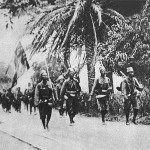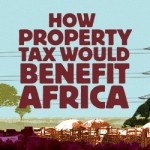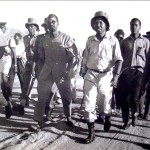Opinion polling prior to Kenya’s August 2017 presidential elections suggested a dead heat between the incumbent, Uhuru Kenyatta of the Jubilee Party (JP), and his main opponent, Raila Odinga of the National Super Alliance (NASA). Election results released by the Independent Electoral and Boundaries Commission (IEBC) show a comfortable victory for Kenyatta, who took 54.2% to Odinga’s 44.7%. Both presidential candidates increased their share of the vote over that of the last election in 2013, when Odinga took 43.7% and Kenyatta won a narrower majority of 50.5%.
Alleging the elections were rigged, Odinga is contesting the results at the Supreme Court. The Court is required to hear the case and deliver a verdict by 1 September.
NASA has yet to publicly produce compelling evidence of fraud. A partial analysis of the constituency tabulation results forms (Form 34B), shows a scattering of mathematical errors and inconsistencies. These do not appear to be of the scale required to overturn Kenyatta’s margin of victory. Further analysis of these forms, and their counterparts issued at the polling station (Form 34A), may indicate localised electoral fraud, mismanagement, or human error.
If the IEBC figures are broadly correct, what statistical trends does the data reveal? What may explain the scale of Kenyatta’s victory? A preliminary analysis of the election data available at county level suggests four trends:
- Kenyatta increased his share of the vote in a larger number of the most populous counties, whether or not these areas were JP strongholds.
- Across the country, Kenyatta increased his share of the vote in more counties than Odinga.
- Kenyatta generally achieved higher turnout in his areas of core support; turnout figures for Odinga were weaker in key areas of his support, notably the coast.
- Kenyatta was more consistent than Odinga in picking up support in areas where a third party candidate had performed well in 2013. There were no strong third party candidates for president in 2017.
Kenyatta increased his share of the vote in more of the most populous counties
Kenya’s 47 counties vary considerably in population. In 2017, 11 counties accounted for more than seven million of the valid votes cast, nearly half the total cast nationwide. More than 400,000 valid votes were cast in each of these counties, which span Kenya’s political spectrum. They include big cities and more rural areas and are spread through western, central and eastern areas of the country. They are nearly evenly divided between areas of support for Kenyatta/JP and areas of support for Odinga/NASA.
Compared to the 2013 election, Kenyatta increased his share of the vote in all but one of these counties, as shown in Table 1. Even a modest increase in vote share is significant given the number of votes on offer in these areas. Meanwhile, Odinga’s share of the vote increased in only six of these counties, and decreased in five counties.
Table 1: Counties with more than 400,000 votes cast, and swing in vote share by candidate, 2017 election
|
County |
Valid votes cast | Swing to Kenyatta (%) | Swing to Odinga (%) |
| Nairobi City | 1,635,416 | 1.34 | 1.58 |
| Kiambu | 985,417 | 1.92 | -0.93 |
| Nakuru | 754,537 | 3.84 | -2.48 |
| Kakamega | 555,581 | 8.84 | 22.56 |
| Meru | 543,580 | -1.48 | 2.67 |
| Murang’a | 508,808 | 1.43 | -0.65 |
| Machakos | 471,112 | 7.92 | -6.11 |
| Kisumu | 439,423 | 0.43 | 0.76 |
| Bungoma | 421,060 | 17.76 | 14.46 |
| Kisii | 405,872 | 15.43 | -13.43 |
| Homa Bay | 402,836 | 0.25 | 0.08 |
Kenyatta increased his share of the vote in more counties than Odinga
Kenyatta increased his share of the vote in 41 of 47 counties, and lost ground in six. Odinga increased his share of the vote in only 16 counties, and did worse in the remaining 31.
In nine counties, Kenyatta achieved a 9.5% or better improvement in his share of the vote, as shown in Table 2. Most of these counties – six of nine – were won by Odinga. The results suggest Kenyatta was able to make in-roads in areas where he performed poorly in 2013.
Table 2: Kenyatta’s share of the vote, 2013 versus 2017, and swing in share of the vote
|
County |
2013
(%) |
2017
(%) |
Swing
(%) |
| Marsabit | 47.35 | 83.63 | 36.28 |
| Nyamira | 29.84 | 52.07 | 22.24 |
| Bungoma | 12.44 | 30.20 | 17.76 |
| Kisii | 27.78 | 43.22 | 15.43 |
| Turkana | 29.97 | 44.94 | 14.97 |
| Taita Taveta | 13.33 | 27.69 | 14.36 |
| Wajir | 39.05 | 51.20 | 12.16 |
| Tana River | 34.99 | 46.10 | 11.12 |
| Kwale | 14.15 | 23.71 | 9.56 |
In comparison, as seen in Table 3, Odinga achieved a similar or better swing in his share of the vote in only four counties: Vihiga, Kakamega, Bungoma and West Pokot. In contrast to the shift in support for Kenyatta, in three of these four counties Odinga was already strong, having performed well in 2013. Only in West Pokot was Odinga able to increase his share of the vote at Kenyatta’s expense.
Odinga’s improved performance in these counties was largely at the expense of third party candidates. Crucially, Kenyatta was also able to increase his share of the vote in three of these four counties, again largely at the expense of third party candidates.
Table 3: Odinga’s share of the vote in 2013 and 2017, swing in share for Odinga and Kenyatta, and swing in share of the vote for third party candidates
| County | Odinga share of the vote, 2013
(%) |
Odinga share of the vote, 2017
(%) |
Swing for Odinga
(%) |
Swing for Kenyatta (%) | Swing against third parties
(%) |
| Vihiga | 47.03 | 89.64 | 42.62 | 7.61 | -50.23 |
| Kakamega | 64.80 | 87.36 | 22.56 | 8.84 | -31.40 |
| Bungoma | 53.64 | 68.10 | 14.46 | 17.76 | -32.23 |
| West Pokot | 23.10 | 34.44 | 11.34 | -9.04 | -2.30 |
Higher turnout in areas of Kenyatta’s core support
18 counties reported voter turnout of 80% or more. Kenyatta triumphed in 14 of these 18 counties.
Of the five counties with turnout of 70% or lower, Odinga won four of them, including, critically, the highly populated coastal counties of Kilifi and Mombasa. Odinga/NASA voters appear not to have been as effectively mobilised as supporters of Kenyatta/JP. In coastal counties such as Kwale and Mombasa, which voted heavily for Odinga, turnout fell from the levels recorded in 2013.
Table 4: Comparison in turnout in selected coastal counties, 2013 versus 2017
|
County |
Turnout, 2013 (%) | Turnout, 2017 (%) |
| Kwale | 73.59 | 67.08 |
| Mombasa | 66.62 | 60.49 |
| Kilifi | 64.91 | 66.23 |
| National | 85.91 | 79.37 |
Kenyatta took more of the 2013 third party vote than Odinga
In 2013, third party candidates took 5% of the vote or more in 12 counties, as shown in Table 5. In 2017, only one county, Isiolo, saw a third party candidate take more than 5% of the vote. Discounting Isiolo, Kenyatta increased his share of the vote in all 11 other counties, by an average 8.2%.
Odinga’s performance was more mixed. His share of the vote decreased in four of 12 counties. In Vihiga, Bungoma and Kakamega, most, but not all, of the support for 2013 third party candidate Musalia Mudavadi, now aligned with NASA, did transfer to Odinga.
Table 5: Third party share of the vote, 2013 and 2017, and swing to Kenyatta and Odinga, 2017
| County | 2013
(%) |
2017
(%) |
Swing to Kenyatta
(%) |
Swing to Odinga (%) |
| Vihiga | 51.44 | 1.21 | 7.61 | 42.62 |
| Bungoma | 33.93 | 1.70 | 17.76 | 14.46 |
| Kakamega | 32.54 | 1.13 | 8.84 | 22.56 |
| Trans Nzoia | 14.74 | 1.15 | 6.42 | 7.17 |
| Isiolo | 14.46 | 15.57 | -6.43 | 5.32 |
| Wajir | 11.09 | 4.59 | 12.16 | -5.65 |
| Busia | 9.75 | 0.73 | 8.71 | 0.30 |
| Nandi | 8.92 | 0.62 | 4.51 | 3.79 |
| Lamu | 6.65 | 1.75 | 8.32 | -3.42 |
| Garissa | 5.46 | 3.42 | 2.70 | -0.68 |
| Mombasa | 5.40 | 1.05 | 5.04 | -0.68 |
Preliminary conclusions
Analysis of these election results suggest Kenyatta and the JP ran a better campaign, even in areas historically opposed to the party and its candidate. JP better mobilised voters in areas of both strength and relative weakness, and focused on areas with the greatest number of registered voters. By increasing his support in almost all areas of the country, Kenyatta appears to have demonstrated a broader national appeal to Kenyans. These trends suggest that voters did not only consider ethnic or tribal identity in casting their votes, as the swing towards Kenyatta cannot solely be explained by shifts in demography.
In contrast, Odinga and NASA failed to mobilise more voters in their areas of strongest support. Despite potentially favourable economic and political circumstances, the opposition was apparently unable to significantly increase its appeal to Kenyans in key electoral districts across the country. Odinga failed to win over enough voters who had supported third party candidates in 2013. Collectively, even if Odinga increased his share of the vote relative to 2013, it appears he underperformed in too many areas of the country to win in 2017.
N.B. All data was sourced from the IEBC’s public results database. All findings are preliminary and subject to confirmation of the final figures and cross-referencing against original Forms 34A and 34B.
Aly Verjee is a visiting expert at the U.S. Institute of Peace and a fellow of the Rift Valley Institute.












